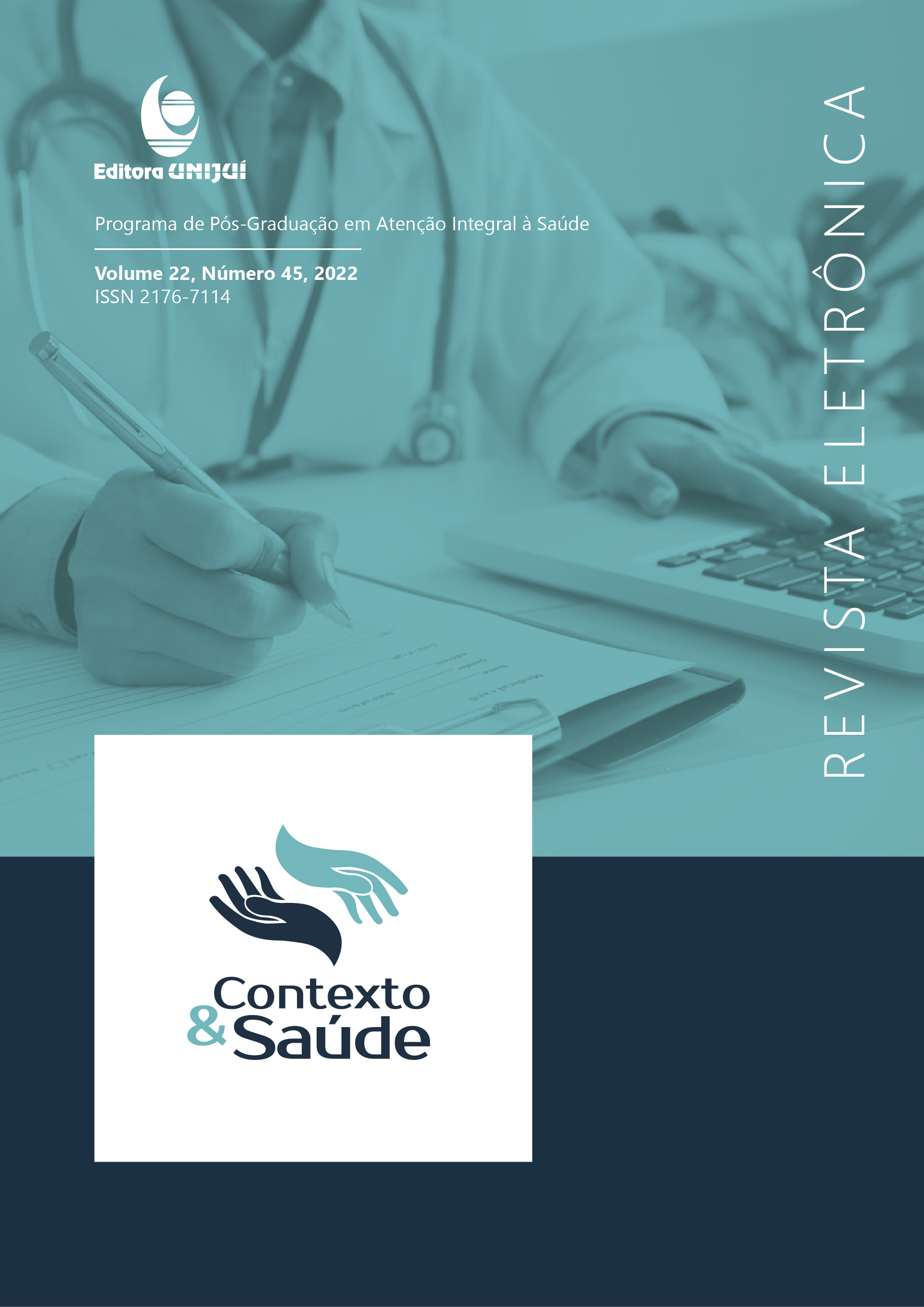Efeitos da eletroestimulação percutânea associada ao exercício físico sobre a gordura abdominal de mulheres jovens
DOI:
https://doi.org/10.21527/2176-7114.2022.45.10150Palavras-chave:
exercício, Estimulação Elétrica Nervosa Transcutânea, Gordura subcutânea abdominalResumo
Objetivo: analisar o efeito da eletroestimulação percutânea associada à prática de exercício físico sobre a gordura localizada em região abdominal de mulheres jovens. Método: Foi realizado um estudo clínico prospectivo, randomizado e simples-cego, do qual participaram 40 voluntárias, com idades entre 18 e 38 anos, que apresentaram razão cintura/estatura (RCEst) entre 0,44 e 0,80. As
participantes foram submetidas à avaliação de composição corporal por bioimpedância e perimetria, e responderam a um questionário
de estilo de vida. Divididas em grupo controle (atividade física) e grupo experimental (eletrolipólise associada à atividade física), elas realizaram 10 sessões com tempo de 50 minutos para cada modalidade. Os dados foram analisados com estatística descritiva e análise de variância a dois fatores para medidas repetidas. O nível de significância α estabelecido foi de 5% (α< 0,05).
Resultados: No questionário, os dois grupos foram classificados como possuindo estilo de vida muito bom. A comparação dos resultados das medidas corporais avaliadas após a intervenção revelou redução significante no perímetro da cintura em ambos os grupos e no perímetro abdominal apenas no grupo experimental. Houve redução do percentual de massa gorda apenas no grupo
controle. Conclusão: A eletrolipólise aplicada de forma percutânea, associada ao exercício físico, foi suficiente para proporcionar alterações significantes na perimetria da região da cintura. Apesar disto, não foi observada redução significante de peso ou massa
gorda decorrente da aplicação da eletrolipólise.
Downloads
Publicado
Como Citar
Edição
Seção
Licença

Este trabalho está licenciado sob uma licença Creative Commons Attribution 4.0 International License.
Ao publicar na Revista Contexto & Saúde, os autores concordam com os seguintes termos:
Os trabalhos seguem a licença Creative Commons Atribuição 4.0 Internacional (CC BY 4.0), que permite:
Compartilhar — copiar e redistribuir o material em qualquer meio ou formato;
Adaptar — remixar, transformar e criar a partir do material para qualquer fim, inclusive comercial.
Essas permissões são irrevogáveis, desde que respeitados os seguintes termos:
Atribuição — os autores devem ser devidamente creditados, com link para a licença e indicação de eventuais alterações realizadas.
Sem restrições adicionais — não podem ser aplicadas condições legais ou tecnológicas que restrinjam o uso permitido pela licença.
Avisos:
A licença não se aplica a elementos em domínio público ou cobertos por exceções legais.
A licença não garante todos os direitos necessários para usos específicos (ex.: direitos de imagem, privacidade ou morais).
A revista não se responsabiliza pelas opiniões expressas nos artigos, que são de exclusiva responsabilidade dos autores. O Editor, com o apoio do Comitê Editorial, reserva-se o direito de sugerir ou solicitar modificações quando necessário.
Somente serão aceitos artigos científicos originais, com resultados de pesquisas de interesse que não tenham sido publicados nem submetidos simultaneamente a outro periódico com o mesmo objetivo.
A menção a marcas comerciais ou produtos específicos destina-se apenas à identificação, sem qualquer vínculo promocional por parte dos autores ou da revista.
Contrato de Licença (para artigos publicados a partir de setembro/2025): Os autores mantém os direitos autorais sobre seu artigo, e concedem à Revista Contexto & Saúde o direito de primeira publicação.

